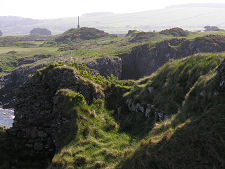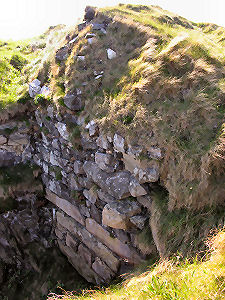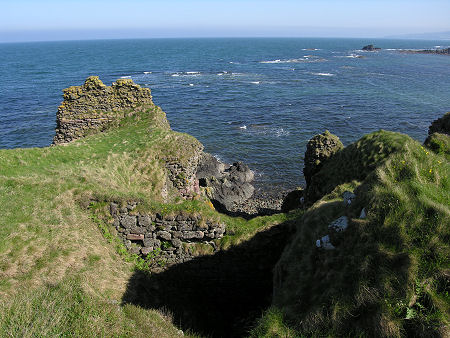 Much of What's Left of Turnberry Castle |
The main road along the Ayrshire coast from Maidens to Turnberry passes between the superb hotel and the houses associated with the Westin Turnberry Resort on one side, and the Turnberry Golf Club on the other. On the far, seaward, side of the championship golf courses stands a local landmark, Turnberry Lighthouse, close to the tip of Turnberry Point.
Lighthouses have a fascination all of their own, especially for a nation whose history is so closely tied to the sea. But although Turnberry's, built in 1873, is a perfectly nice lighthouse, it's by no means the most interesting thing you find at Turnberry Point. Because the lighthouse was built on part of the site of a castle whose ruins had stood here since being slighted to stop it falling into English hands in 1310.
The origins of Turnberry Castle are lost in antiquity. It was probably built in the 1200s, and probably stands on the site of an earlier wooden fortification erected here by the ancient Earls of Carrick. In the late 1200s Turnberry Castle was the home of Marjorie, Countess of Carrick.
In an unusually twist on what was probably a fairly common medieval story, Marjorie kidnapped Robert Bruce, 6th Lord of Annandale and held him prisoner at Turnberry Castle until he agreed to marry her. The wedding took place in 1271, and three years later their eldest son Robert was born. The child, who went on to become Robert the Bruce, or Robert I of Scotland was probably born here at Turnberry Castle, as was his older sister, Lady Christian Bruce.
In 1307 Robert the Bruce recaptured Turnberry Castle from the English at the start of the long road to his eventual victory at Bannockburn. It is ironic that it was also Robert the Bruce who ordered the destruction of the castle to stop it falling into English hands again in 1310.
It was never rebuilt, probably because of the development later in the 1300s of Coif Castle, two miles up the coast and Dunure Castle, four miles further on. Coif Castle later became better known as Culzean Castle.
The main focus of Turnberry Castle seems to have been immediately to the north of the lighthouse where some steep and very rocky humps and bumps turn out to reveal pieces of stone wall in some unlikely places: though today only one short stretch of the stonework actually stands as a wall.
Be aware that this area is very steep, requiring scrambling even to get close; that there are sharp drops into the sea; and that the ground surface is far from stable in places. To put it another way, if you do decide to explore the area of the castle, take extreme care.
Forming a mental picture of the layout of the castle is all but impossible from the fragmentary remains on view today. To the north of the lighthouse you do get the impression that in places it dropped sheer into the sea, and possibly incorporated sea caves. One reconstruction has suggested that the castle included a sea gate through which small ships could sail into a sheltered and protected harbour within the castle itself.
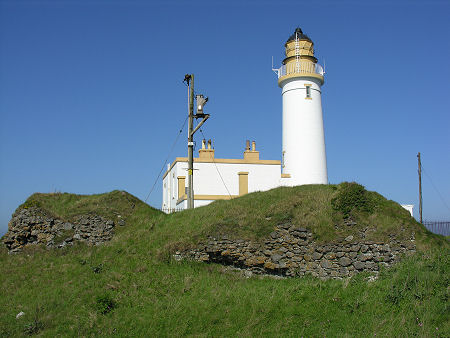 Turnberry Lighthouse, with Castle Remains in the Foreground |

|
|
|
Visitor InformationView Location on MapGrid Ref: NS 197 073 What3Words Location: ///trades.helpless.lawyer |
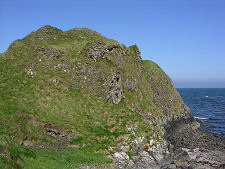 All That's Visible from the North |
 The Main Standing Wall |
 More Walls, and Cave |



